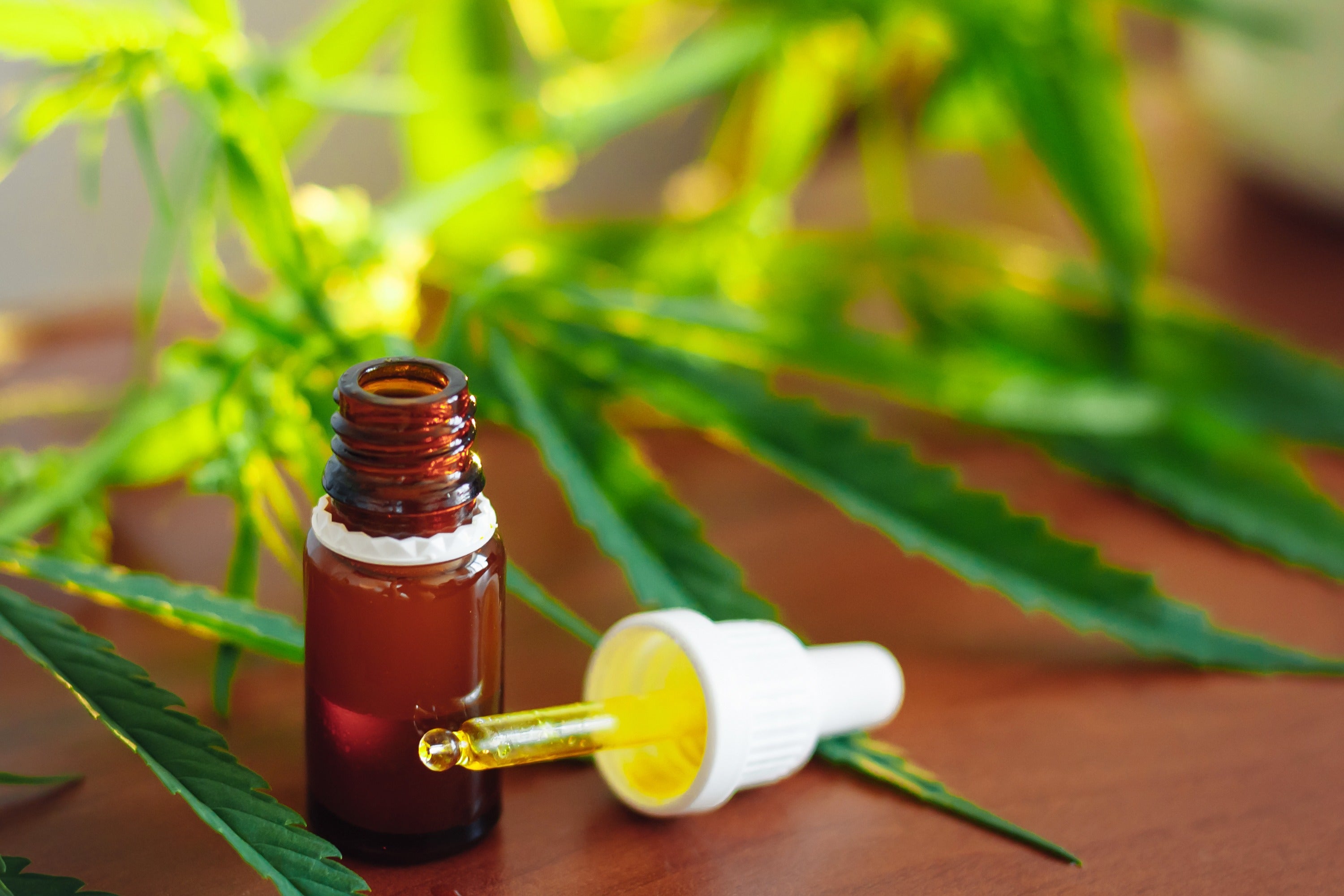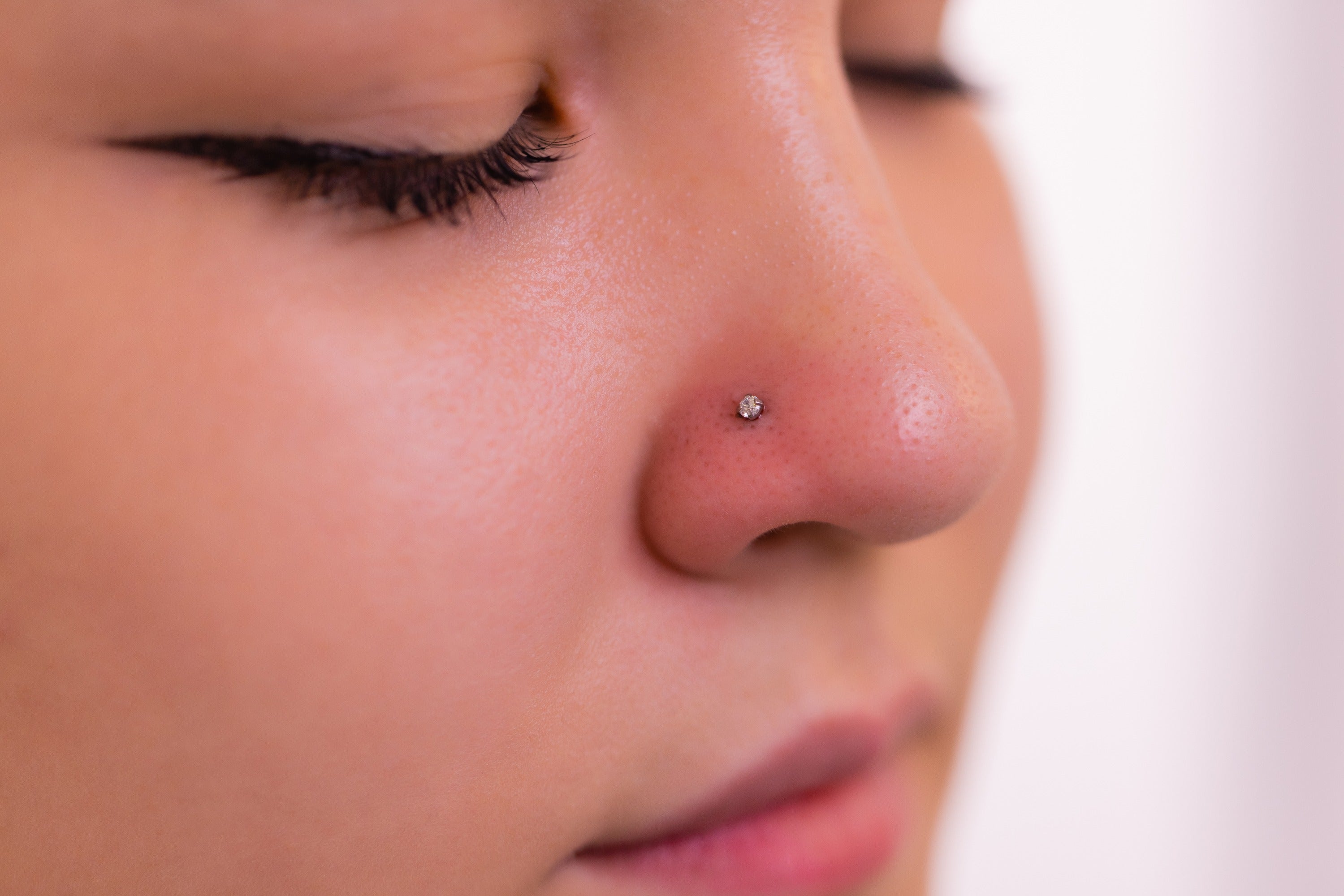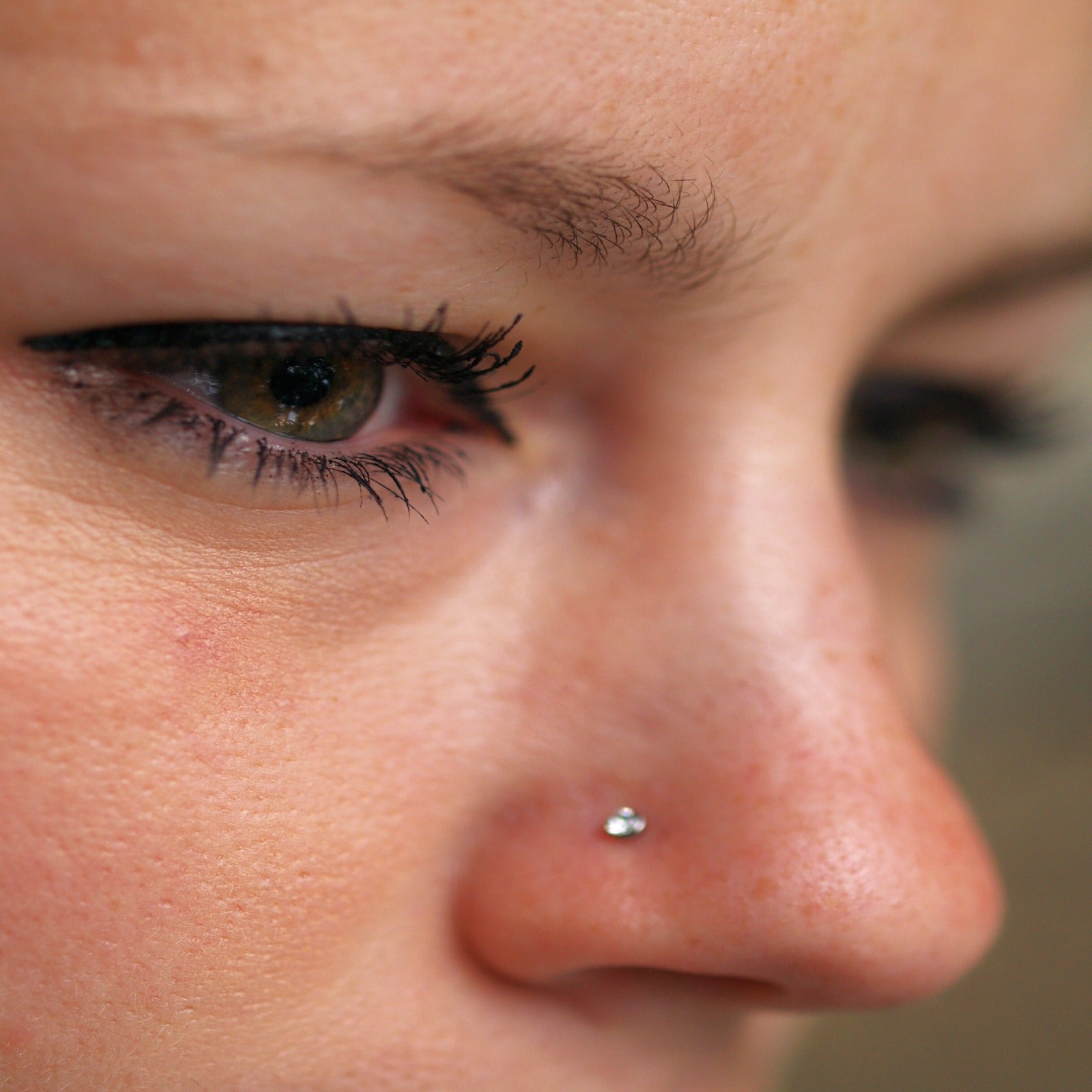Nose Piercing can be pretty unpleasant to have a bump on your nose if you have a nose Piercing. It can also be caused by a raised, reddish lump to your piercing. A bump or piercing hole may leak pus or blood, which is alarming. Your nose may be numb or damaged if you experience nerve damage.
You can try a few things to get rid of a nose-piercing bump. Following proper aftercare to prevent tissue damage or infection that could lead to a bump is essential. Using hypoallergenic jewelry can also help. Another option is to employ a sea salt solution or tea tree oil. Applying a warm compress can also be helpful.
In this blog post, we will explain the fastest ways to remove nose-piercing bumps and the reasons a nose-piercing bump occurs.
How To Get Rid of Nose Piercing Bump: 9 Fastest Ways

Nose piercings are self-expression, but they can cause bumps. Infections, allergic reactions, or improper care can induce these bumps. But don't worry, several ways exist to prevent or treat them. Here are effective strategies for eliminating nose-piercing bumps.
Use Hypoallergenic Jewelry
To get rid of nose piercing bumps, ensure your jewelry is hypoallergenic.
- One cause of nose piercing bumps is an allergic reaction to the jewelry material
- Some common allergens are nickel, copper, or brass.
- To prevent or reduce an allergic reaction, use hypoallergenic jewelry, such as titanium, surgical steel, or gold.
- You should also avoid changing your jewelry too often or using cheap or low-quality jewelry.
- If you notice any signs of an allergy, such as itching, swelling, or rash, remove the jewelry and consult your piercer or a doctor.

Use a Sea Salt Solution
Sea salt solutions are a popular and effective home remedy for piercing bumps.
- A sea salt solution is a simple and effective way to clean and heal a nose-piercing bump.
- Sea salt has antibacterial and anti-inflammatory properties that can help fight infection and reduce swelling.
- Mix 8 ounces of distilled water with 1/4 teaspoon organic sea salt to make a sea salt solution.
- Use a cotton ball, swab, or spray bottle to apply the solution to both areas.
- You should do this twice daily for 10 minutes until the bump heals.
Try Tea Tree Oil

Natural antiseptic with powerful pain-relieving properties, making it a great option for treating nose-piercing bumps.
- Inflammatory and antiseptic agents that can treat a nose-piercing bump.
- Tea tree oil can kill bacteria, fungi, and viruses that can cause infection and inflammation.
- Dilute tea tree oil with jojoba, coconut, or olive oil.
- You can use a ratio of 1 drop per 10 drops of carrier oil.
- You can apply the mixture to your bump.
- You should do this once daily for a few weeks until the bump heals.
Apply a Warm Compress
A warm compress can soothe the affected area and promote faster healing.
- A warm compress is a simple and soothing way to relieve pain and discomfort from a nose-piercing bump.
- A warm compress can increase blood circulation, reduce inflammation, and promote healing.
- You need hot water and a clean cloth to make a warm compress.
- You can place the cloth or the towel over both the bump and the piercing.
- It is recommended that you perform this procedure for 15 minutes at a time, several times a day until the pimple has healed.

Use a Chamomile Tea Compress
Chamomile tea is known for its calming and anti-inflammatory properties, making it an excellent alternative for a compress.
- Chamomile tea is an herbal remedy for nose piercings.
- Tea with chamomile reduces swelling, redness, and irritation.
- To make a chamomile tea compress, steep some chamomile tea and let it cool.
- You can use a tea bag or a cotton ball to apply the tea directly.
- You should do this for 10 minutes, several times daily until the bump heals.
Avoid Touching Your Piercing
One of the biggest culprits of nose-piercing bumps is touching the piercing with dirty hands.
- One of the most important things to do to prevent or heal nose piercing bumps is to avoid touching your piercing.
- Touching your piercing can introduce bacteria, dirt, or oil to the piercing site, which can cause infection and inflammation.
- Touching your piercing can also irritate or damage the skin, which can delay healing or cause scarring.
- You should only touch your piercing when cleaning it or changing your jewelry and always wash your hands before and after.
- You should also avoid picking, popping, or squeezing the bump, worsening the condition and leading to complications.
Aloe Vera

Aloe Vera has been used for centuries for its healing properties, and it can be pretty effective for treating nose-piercing bumps.
- Aloe vera can be used to heal and benefit your skin in several ways.and healing.
- Aloe vera gel has moisturizing, soothing, and anti-inflammatory effects that can help heal a nose-piercing bump.
- Aloe vera gel can also prevent scarring and improve the appearance of the skin.
- To use aloe vera gel, extract it from a fresh leaf or buy a pure aloe vera gel product.
- You can apply the gel to the bump and piercing site with a cotton swab.
- You should do this twice a day until the bump heals.
Do Not Remove Your Jewelry
Your first instinct might be to remove your jewelry if your piercing gets infected. It's possible to treat most infections while wearing jewelry. When you remove your jewelry, it can leave scars or make your condition worse.
You might need to remove your jewelry if you're allergic to the metal. Don't remove your jewelry unless your doctor says so.
Use Proper Aftercare
Proper aftercare is key to preventing and treating nose-piercing bumps.
- The best way to get rid of a nose piercing bump is to follow proper aftercare instructions from your piercer or a doctor.
- Proper aftercare can prevent infection, allergy, trauma, or scarring, which are the leading causes of bumps from nose piercings.
- Proper aftercare includes regularly cleaning the piercing and the jewelry, using the right products and methods, and avoiding any activities or substances that can harm the piercing.
- Proper aftercare can also help the piercing heal faster and better and prevent any complications or problems.
- Use a saline solution twice a day to clean the area.
- It is recommended not to remove jewelry until four to six months after a nose piercing has healed.
- Moving jewelry, playing with it, or knocking the piercing when getting dressed.
- Protect the nose piercing from bacteria when swimming by wearing a waterproof dressing.
- Do not use lotions, cosmetics, or hair care products near the piercing.
4 Causes of a Nose Piercing Bump

It's not uncommon for bumps to appear around the piercing. You can get these bumps from pyogenic granulomas, abscesses, keloids, or hypertrophic scars. The correct way to eliminate these irritating bumps can be determined by understanding the causes.
Pyogenic Granuloma
Pyogenic granulomas are bright red or purple, raised bumps that can develop around a piercing site. They may look scary, but don't worry, they're not usually harmful. They occur when there's an overgrowth of small blood vessels and inflammation.
- A pyogenic granuloma is a benign growth of blood vessels on the body or mucous membranes.
- Also called lobular capillary hemangioma.
- It usually appears as a painless red, brownish-red, or blue-black spot proliferating over a few days to weeks.
- It can range from a couple millimeters to several centimeters.
- It typically bleeds easily and may ulcerate to form a crust.
- The exact cause of a pyogenic granuloma is unknown, but trauma, infection, hormonal changes, or medications could be to blame. Trauma, disease, hormonal changes, or drugs.
- A pyogenic granuloma occurs after a minor injury, irritation, or infection of the piercing site.
- Occasionally, certain metals, which cause allergic reactions, can cause it.
- To prevent a pyogenic granuloma, it is essential to prevent touching or picking the bump, and use hypoallergenic jewelry.

Pustule
Pustules are small, inflamed, pus-filled bumps. They can appear when a nose piercing is infected.
- A pustule is a slight bump on the skin that contains pus and fluid.
- It usually appears as a white or red bump surrounded by inflamed skin
- It can be painful or sore to the touch.
- An abscess can occur on a nose piercing because of acne, an allergic reaction, or an infection.
- Acne can cause an abscess if the pores are clogged, causing inflammation and bacterial growth.
- An allergic reaction may cause an abscess when the skin reacts to the jewelry material, nickel, copper, and brass, causing itching, swelling, or rash.
- An infection occurs when the piercing site is contaminated with bacteria, fungi, or viruses, causing pus or blood to ooze from the bump or the piercing hole.
- To prevent a boil, avoid touching or popping the piercing, and use hypoallergenic jewelry.
Keloid
Scars called keloids extend beyond the original injury site. They can form after a nose piercing and be bigger than the piercing itself.
- A keloid is a thick scar that forms when the body produces too much collagen.
- It is also known as a keloid disorder or a keloidal scar.
- It usually appears as a shiny, hairless, lumpy, raised skin that varies in color from pink to red to purple.
- Millimeters to centimeters in size.
- It can cause pain, itching, numbness, or nerve damage in the nose.
- The exact cause of a keloid is unknown, but it may be related to genetics, skin type, age, or hormonal changes.
- A keloid is caused by infection, trauma, or poor piercing technique, leading to inflammation, irritation, or scarring.
- It can also be triggered by the materials used in jewelry, such as brass, copper, or nickel.
- Protect the piercing from touch, avoid picking, and wear hypoallergenic jewelry to prevent a keloid.
Hypertrophic Scar

Hypertrophic scars are like keloids but they don't extend beyond the injury site. They're raised, red, and can be itchy or painful.
- A hypertrophic scar develops when the body produces excess collagen during wound healing.
- It is like a keloid, but it stays on the original wound fade.
- It usually appears as a red, raised, or firm skin that varies in size from a few millimeters to several centimeters.
- It can cause pain, itching, or restriction of movement in the nose.
- The exact cause of a hypertrophic scar may be trauma, infection, or tension on the wound.
- A hypertrophic scar may form following a nose piercing because of trauma, inflammation, or infection.
- Jewelry materials, such as nickel, copper, or brass, can also trigger it.
- Don't touch or pick bumps to prevent a hypertrophic scar, and wear hypoallergenic jewelry.
When To Seek Medical Assistance For a Nose Piercing Bump
The nose piercing process can sometimes be complicated despite our best efforts. Not all symptoms are a cause for major concern, but there are specific signs that warrant immediate medical attention. Here's what to look out for:
Persistent Issues
If your piercing shows no improvement after two weeks, it's time to revisit your piercer. They can confirm whether you're providing the correct aftercare and offer better advice on managing the situation.
Severe Pain
Experiencing an uncomfortable amount of pain is not a normal part of the healing process. If your piercing hurts more than expected, seeking medical advice is crucial.
Indications of Infection

Symptoms such as a throbbing or burning sensation, redness, heat around the piercing, or a significant amount of discharge (especially if it's grey, green, or yellow), or bad smell may indicate an infection.
Other Serious Symptoms
If you're experiencing fever, dizziness, confusion, or nausea, these could be signs of a more serious issue. Don't ignore these symptoms; they require immediate medical attention.

Recognizing More Serious Infections
Minor swelling and redness are usually part of the healing process. However, if you notice the following signs, you may have a more severe infection:
- Around the piercing site, you may experience discomfort, throbbing, or burning.
- At the site of the piercing, there is unusual tenderness.
- The piercing site has an unpleasant odor with pus oozing from it.
Conclusion
From nose piercing bumps and their causes to prevention tips and treatment options, it's clear that caring for your nose piercing is a delicate process. Remember, the key is to keep it clean and dry, avoid fidgeting with it, and use gentle cleaning methods.
But remember, while we've given you some handy home remedies, it's vital to seek professional help if your bump is large, persistent, infected, or bleeding. Having a nose piercing is a fun and beautiful way to express yourself but it also requires responsibility. So, enjoy your piercing, but remember to listen to your body and consult your piercer or doctor if you have any concerns.

![9 Fastest Ways to Get Rid of Nose Piercing Bump: 4 Causes [Effectively]](http://drnumb.com/cdn/shop/articles/How_To_Get_Rid_of_Nose_Piercing_Bump.jpg?v=1709036698&width=1100)



![The Recovery Time and Stages of Nipple Piercings [Best Practices]](http://drnumb.com/cdn/shop/articles/How_Long_Do_Nipple_Piercings_Take_To_Heal__3_Stages_Explained.jpg?v=1714373243)

